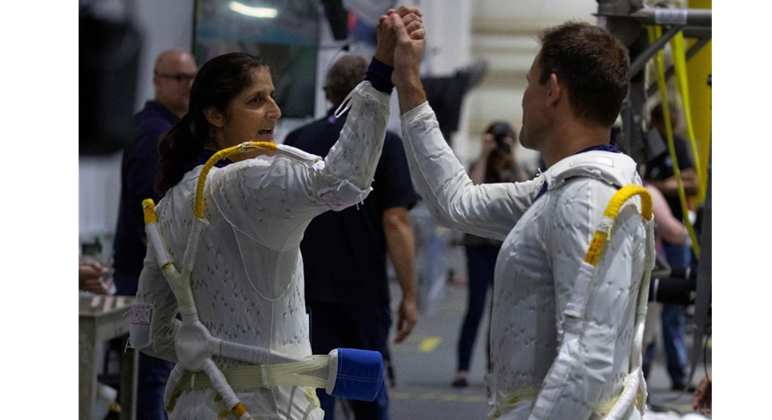The challenges associated with space missions and related technical issues have always been serious and complex. Recent issues in NASA’s mission involving Indian-origin astronaut Sunita Williams and her fellow astronaut Barry Wilmore have once again highlighted these complexities.
On June 5, Sunita Williams made history as the first woman to pilot a new spacecraft from Boeing called ‘Starliner’ from the Cape Canaveral Space Force Station in Florida, accompanied by Barry. Approximately 26 hours after launch on June 6, the spacecraft docked with the International Space Station (ISS).
Issues during the mission
The mission for Sunita and Barry was scheduled to conclude on June 13, with plans for their return the same day. However, technical issues with the Boeing Starliner have repeatedly delayed their return. Several problems have been identified with the Boeing Starliner, the most significant being helium leaks in multiple locations within the thruster system, which have hindered the spacecraft’s return. Additionally, a thruster failure was observed when the spacecraft approached the space station on June 6.
Role of NASA and Boeing
Reports suggest that both NASA and Boeing were aware of the helium leak in the Starliner beforehand, yet the decision was made to proceed with the mission launch. Originally scheduled for May 7, the launch was postponed due to the helium leak. Now, this issue poses a barrier to the safe return of Sunita Williams and Barry Wilmore.
Starliner’s fuel capacity
The Starliner has a fuel capacity of only 45 days, and approximately 22 days have already passed since the start of this mission. Connected to the Harmony module, the spacecraft cannot stay docked for an extended period. Without prompt action from NASA, the spacecraft’s propulsion system data may be compromised, risking the safe return of both astronauts. If the helium leak and reaction control system issues affect the fuel system, the mission could end prematurely, forcing NASA to consider other options.
History of past flaws
Boeing’s Starliner program has struggled for years with software glitches and design issues. During its first crewless flight in 2019, software problems caused the spacecraft to enter the wrong orbit. The second flight encountered issues with the fuel valve, and now the third flight faces helium leaks and thruster failures. According to various reports, there are several issues with Boeing’s capsule.
Did NASA knowingly endanger them?
It is alleged that NASA knowingly endangered Sunita and Barry for some kind of testing purposes. However, NASA claims that both astronauts are not stranded on the space station but are safe, and they were held there to study the propulsion system data of Starliner.
NASA’s options
Currently, NASA and Boeing are focused on bringing Sunita and Barry safely back. Reports indicate that if Boeing’s Starliner issues cannot be resolved in the coming days, NASA may seek assistance from its former commercial partner SpaceX’s Dragon-2 capsule. Recently, SpaceX’s Crew Dragon successfully delivered four astronauts to the ISS and can accommodate additional passengers in emergencies.
Other potential collaborations
The European Space Agency and England are currently not in a position to assist NASA in this situation. Therefore, NASA’s alternative is to seek help from China, and China could send its Shenzhou spacecraft to the ISS and return both astronauts to Earth. However, according to Professor Michael Lembeck, an aerospace engineer at the University of Illinois Urbana-Champaign and former Boeing space flight advisor, both astronauts will return from the Starliner, and there is no need for SpaceX or Shenzhou.
Conclusion
The issues in NASA and Boeing’s mission have once again highlighted the complexities and risks of space missions. However, both NASA and Boeing are making every effort to ensure the safe return of their astronauts. It is hoped that Sunita and Barry will return safely soon, and the lessons learned from this mission will further enhance the safety of future space missions.
ALSO READ: How did the British army, using Indian soldiers, manage to defeat the larger Indian armies?
